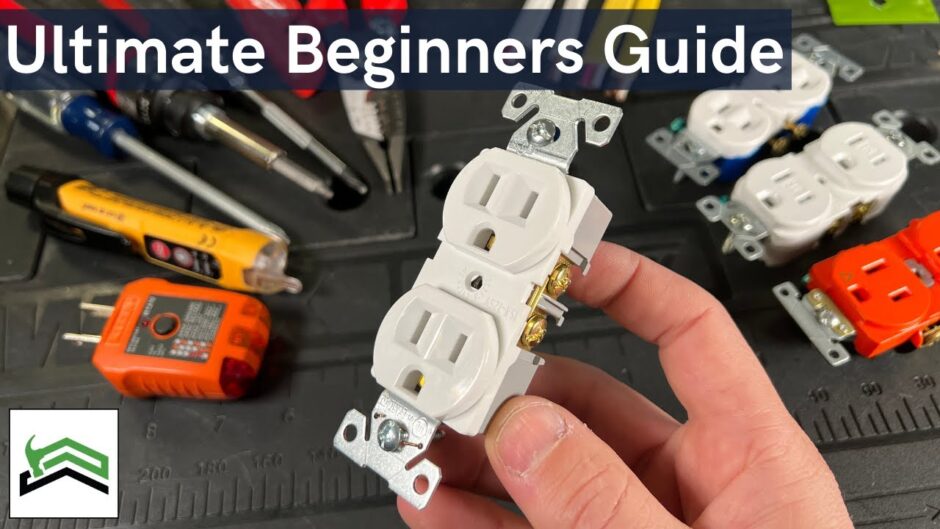DIY!!
Our Amazon Store: https://www.amazon.com/shop/everydayhomerepairs
Might be a bit of a bold statement that this is the best video out there for covering all the basics DIYers need to table a simple outlet install project around the house but take a look and let me know what you think. We will cover the following
Chapters
0:00 Intro
0:50 Common Tools
6:16 Wiring (Gauge, Types of Romex, Wire Color, etc.)
9:26 Common Types of Basic Outlets
12:18 Example of Wiring, Outlet Features, and Proper Techniques
21:43 Recap
Favorite Electrical Tools
Knipex Hybrid Wire Strippers: https://amzn.to/3HIz0hW
Beginner Wire Strippers: https://amzn.to/3sYIXDI
Klein outlet Tester: https://amzn.to/3pZJEKW
Klein NCVT-3P Voltage Tester: https://amzn.to/3JLebUF
Milwaukee ECX #1 Screwdriver: https://amzn.to/3HKEcl5



Perfect! Been looking forward to learning and taking on projects for this! If you ever get time, I would love if you covered labeling and figuring out breaker boxes.
This is seriously one of the best instructional videos that I’ve ever seen on YouTube. Clear instructions, high quality video, and straight to the point. Great job! I’ve been doing DIY electric work around my house for 25 years, and I learned several things about how to get better use of the tools and how to choose the right receptacle.
At 20:25 when you show off the bolt-cutting portions, if you put the screw through the threaded side first then cut, then when you back the screw our of the threaded hole, it will normally fix the tiny edges created from cutting allowing them to easily be screwed in to electrical boxes without risk of going cross-threaded.
Most modern homes use 14/2 15amp for receptacles and general purpose circuits . 20amp 12/2 is mostly only used for kitchens and baths .
Thank you, Scott. I do my own minor electrical work around the home, and have done so for many years. But I never fail to learn something from your videos. This one was great, and I appreciate the work you put into your content.
For screw cutting, insert screw into threaded side in pliers. Make cut. Then, backing out the screw (which may require a screwdriver to start turning) will freshen up the end of the “buffered up” threads.
Very good explanation of all the features on outlets. What makes your video excellent is your evenly paced clear dialog and especially your well lit close up shots. All videos should aspire to this quality of communication. Congratulations.
20:20 One way to be more sure of being able to still thread a nut onto a bolt that you’ve cut the end off of is to first put on a nut before you cut the bolt, so that you can then unscrew it afterwards and thus hopefully restore the threads so that they will be even enough to let nuts get screwed onto the end of the bolt again.
Seen my share of DIY videos, and I can’t recall ever seeing one that had so much useful, helpful info presented in so brief a presentation. Excellent, and thank you. One thing though… I think you said that we’d mostly find 20-amp outlets in our homes, along with 15-amp. Isn’t it the other way around, mostly 15-amp outlets and the occasional 20-amp?
Especially since this is for beginners, it would have been good to demonstrate and emphasize the habit of wiring ground first, then neutral, then hot.